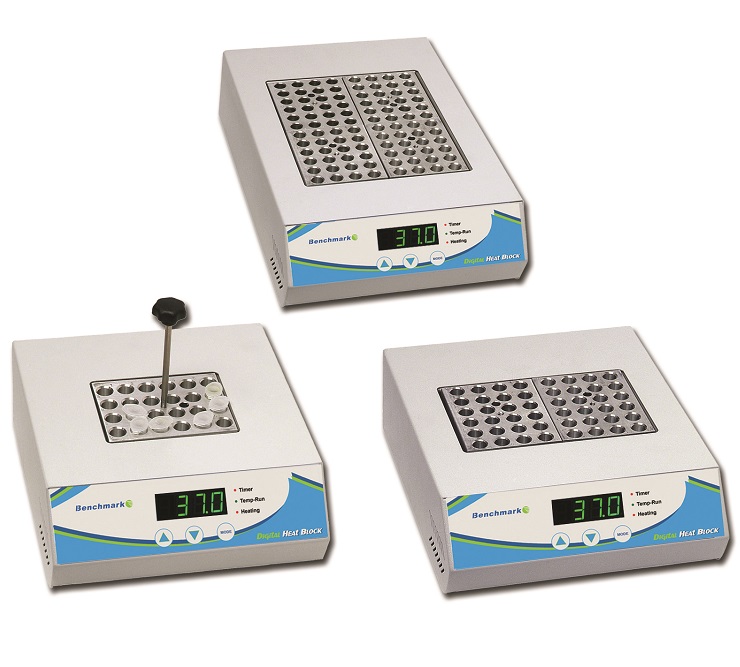Talking About Dry Baths

*This is a guest post written by our supplier, Benchmark Scientific. If you are interested in contributing a piece for our readership, send us an email and we'll follow up.*
Until quite recently, dry baths (sometimes referred to as “incubators” or “block heaters”) were very simple heating machines that would allow users to have marginal control over temperature of samples. With the advent of the digital age and the integration of the microchip into laboratory equipment, this temperature control has become much more accurate and the units have become easier to use. Currently there are a few different models of dry baths out on the market and here is a general summary of some of them: Analog Dry Baths: analog dry baths are the original dry baths available to laboratory personnel. These feature knobs with periodic markings from 0 to 9. The user would turn the knob to increase temperature. It is vital that a thermometer is used with this kind of dry bath as it is difficult to know, except through trial and error, what temperature each of the numbers corresponds to.
Digital Dry Baths: This is the next generation of dry baths. These dry baths use microchips to internally control temperature. Some companies use knobs for temperature adjustment, while some, like Benchmark Scientific, use buttons. Numbers on a digital screen will display temperature which is adjusted by either the movement of the knobs or the pressing of the up or down buttons. These dry baths provide much more accurate temperature control and eliminate the need for an external thermometer (except in the case of calibration). Both analog and digital dry baths can come in many different configurations and sizes. As a rule, dry bath capacity is measured in blocks and some of the most common sizes are 1, 2, and 4 block models.
Some models are known as “fixed block” dry baths. These dry baths have a block (or blocks) of a certain size built into them that cannot be taken out or exchanged. Some models, called modular block dry baths feature a more adaptive system that allows the user to exchange blocks for different sized tubes as he/she needs them. Recently, a push for smaller, lighter and more portable equipment has caused companies to minimize laboratory equipment size. Currently, Benchmark Scientific manufactures the smallest interchangeable block dry bath in the world. The MyBlock™ Mini has a capacity equal to some standard 1 block dry baths but it can fit into the palm of your hand and weighs only 3lbs.
Heating and Cooling Dry Baths: With the growing popularity of Peltier cooling, a new section of the dry bath market began to develop. Some manufacturers are starting to offer digital dry baths that can both heat and cool. Usually the cooling capacity of these dry baths is ambient temperature-20?C. These can be very useful for molecular biology applications that require close to 0?C temperatures to keep samples from denaturing.
Shaking Dry Baths: Some researchers in the Molecular Biology, Biochemistry, Genetics and Cell biology fields require either constant or intermittent agitation of samples in addition to constant heating. The solution to this used to be a temporary change in temperature of sample as the researcher would vortex the sample then place it back into the heating block. This sudden change in temperature can cause some damage to the sample and it is preferable to avoid it if possible. Some companies have taken this into account and are now offering shaking dry baths, such as the Multitherm™. The units available can generally shake and heat at the same time. There are also variations that can shake and heat or cool. As a general rule, these units are programmable and easy to use. They are incredibly accurate and offer a lot of versatility for the researcher.
- Most Viewed Blog Articles (5)
- Company News (285)
- Emerging Technologies (64)
- Microbiology and Life Science News (93)
- Water and Fluid Separation News (97)
- Filtration Resources (93)
- Product News (19)


![Join Sterlitech at BIO 2024 [Booth #5558]: Exploring the Future of Biotechnology](https://www.sterlitech.com/media/blog/cache/300x200/magefan_blog/b4.jpeg)



